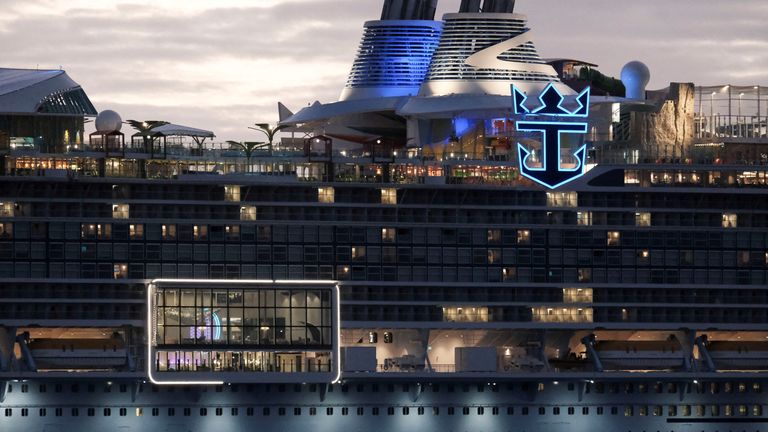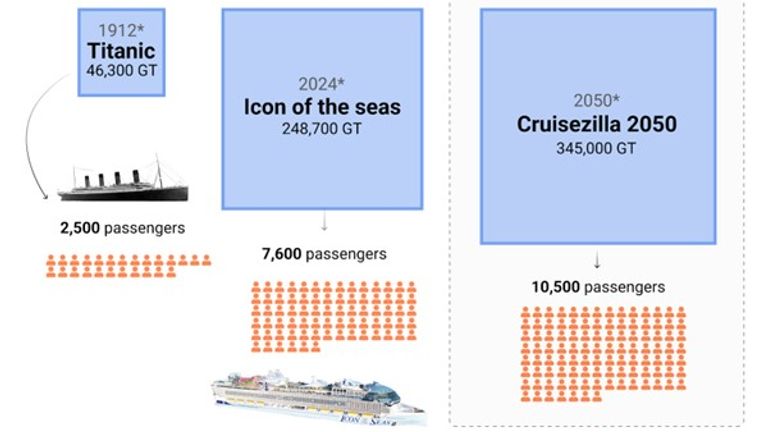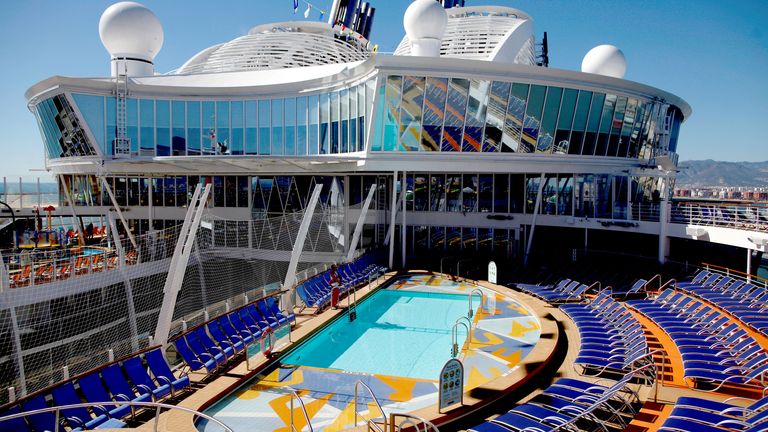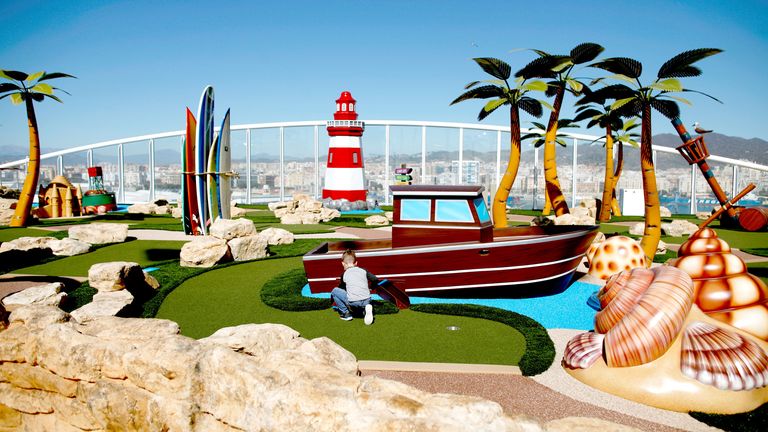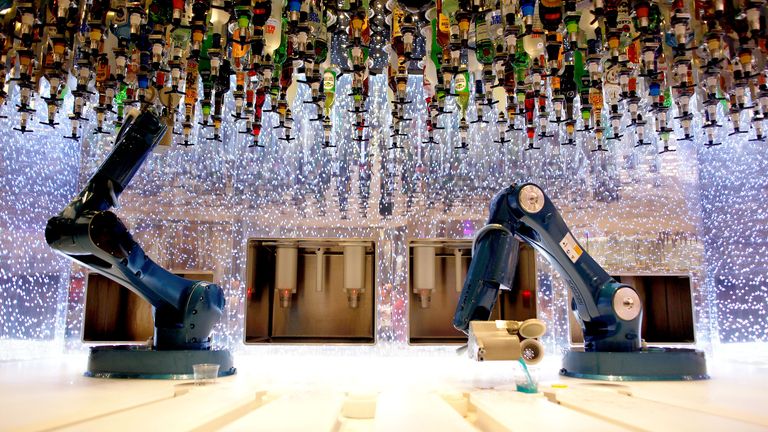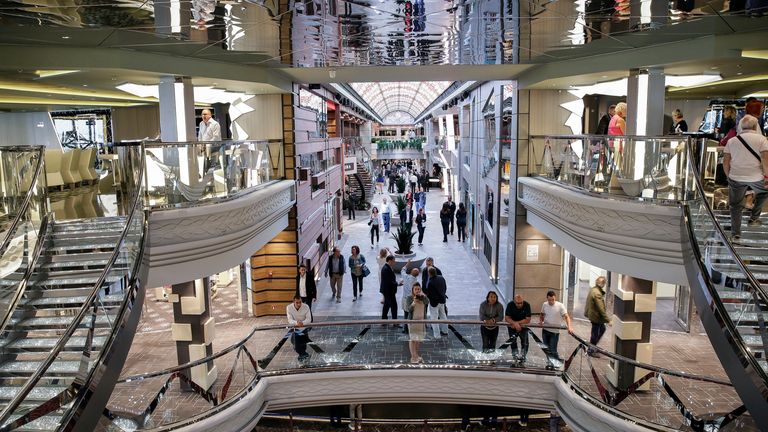‘How much bigger can Cruisezilla giants get?’: Warning about cost to environment as cruise ships continue to grow
Cruise ships have doubled in size in just two decades and now have up to 40 restaurants and seven swimming pools onboard, according to new analysis warning of their environmental impact.
The cruise business is the fastest-growing tourism sector and the number of ships has soared – from 21 in 1970 to 515 today.
If the current growth rate were to continue, the biggest vessels in 2050 would be nearly eight times bigger than the Titanic and carry nearly 11,000 passengers, campaign group Transport and Environment (T&E) claimed today.
Inesa Ulichina, sustainable shipping officer at T&E, said: “Today’s ‘cruisezillas’ make the Titanic look like a small fishing boat. How much bigger can these giants get?”
While it’s not certain the ships will grow so large, there are few technical reasons why they can’t, other than perhaps port sizes.
In January this year the world’s largest cruise ship, the gargantuan Icon Of The Seas, set sail.
The hulking vessel is five times bigger than the Titanic and carries 40 restaurants, seven swimming pools, and 7,600 passengers.
Tourists from the UK and Ireland love a cruise, taking 2.3 million luxury cruise holidays last year, well up from the 1.7 million in 2022. The top destination is the Mediterranean.
However, this boom comes at “a significant environmental cost” in terms of greenhouse gas emissions and air and water pollution, T&E warned.
But the campaign group is not asking people to stop going on holiday.
Ms Ulichina told Sky News the group is “not advocating for a ban on cruises”, though people should be “conscious” of the environmental impact.
Instead, cruise liners should “lead the uptake of green shipping fuels” to help them scale up and drop in price, she said.
Read more from Sky News:
New warning about risk to Great Barrier Reef
Airline ad banned
Be the first to get Breaking News
Install the Sky News app for free



Amid criticism of their pollution, around 38% of ships have already switched from the very dirty heavy fuel oil traditionally used to power big ships to liquified natural gas, which is cleaner, but still a fossil fuel that adds to climate change.
Emissions per passenger have also dropped. But the booming industry means its emissions overall are at least 20% higher than in 2019, before the pandemic.
T&E says the industry should swap from fossil fuels to cleaner “e-fuels” – green hydrogen that can be manufactured using renewable energy and has no emissions.
The same solution is also being explored for aeroplanes, as they also could not accommodate heavy battery power.
Campaigners also want to call time on what they call exemptions for the luxury cruise industry from most fuel duties, corporate taxes and consumer taxes that other modes of transport stump up for.
A €50 (£43) tax on a typical ticket could raise €1.6bn (£1.38bn) globally to pay for climate action around the world, campaigners add.
Sky News has contacted the US-based Cruise Lines International Association, the world’s largest cruise ship trade body, for comment.
